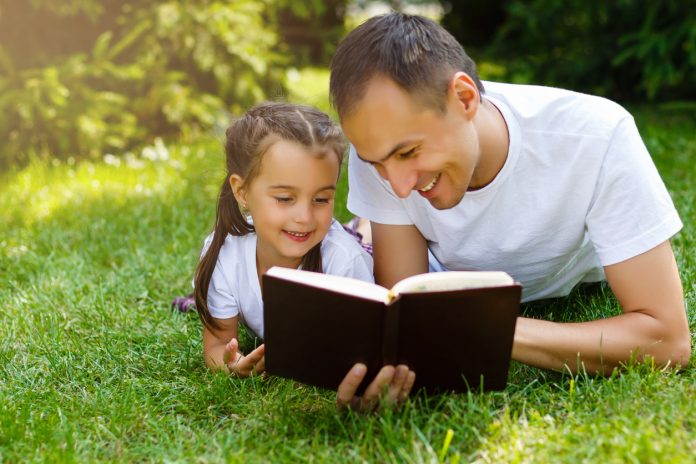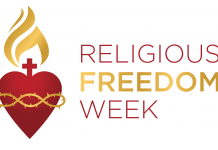
MARC CARDARONELLA
In the end the Catholic faith is not set of doctrines. It’s a story.
Yes, doctrine is important. However, the true heart of Catholicism is the story of God saving us from sin and uniting us to his family. You learn that story by reading the Bible.
I know the idea of getting your kids to read the Bible may sound daunting. However, this is one of the most profitable things you can do to form a child’s faith life.
The Bible is God’s word, living and active. The Holy Spirit can work through the words to inspire, solve problems, answer questions, or simply touch the heart with his love.
Here’s a plan I developed with my kids to get them in the habit of reading the Bible.
First Step: Read to Them
First, establish a routine of reading the Bible five minutes every night before bedtime. That doesn’t sound like much, right? You’ll probably be tempted to do more. Don’t. Five minutes is plenty, especially in the beginning. It’s not taxing, it’s not a hard sell, and it adds up.
I started with children’s storybook Bibles. When we finished one Bible, we’d start another. I used Catholic and Protestant Bibles. There were no major differences at that level.
As my kids got older, I moved up to longer story Bibles with more detail. There are good Catholic versions, but the Protestant selection is the most extensive. At this level, you won’t have to worry about the content.
Next Step: They Read to Themselves
When your children start reading, the same story Bibles are perfect. Use the simplest ones first and work your way up.
Some Bibles include a format for prayer and ask great questions in each section to spark discussion. We had some great conversations while reading these kinds of Bibles.
There are many great Bibles as your kids progress in reading level. Some are more narrative, others are written in comic book/graphic novel style. There’s even a Bible with pictures of posed Lego figures.
One caveat, at older reading levels, however, I highly recommend making sure you provide a Catholic bible to your son or daughter. Here is the list of recommended translations from the USCCB.
Final Step: Graduate to a Real Bible
When they outgrew the story Bibles, perhaps around 5th grade, I got them real Bibles. I started with paraphrase translations like The Good News Bible. I think the best Bible is the one you’ll read. If the language is too literal and stuffy, reading will become a chore. You don’t want that.
Eventually, you’ll want to get them a more literal translation, though. My favorite is the Revised Standard Version. The New American Bible translation is good too. Again, here is that list of recommendations of Bible translations.
You’ll want to figure out some way to track their progress. A chart where they can enter minutes read is the best way. It can even be a blank sheet of paper, though. Also, sweeten the pot with a reward system for hard work they record. You can’t expect them to read just for the sake of reading at this point … but someday they will!
So, there’s my plan. It worked great with my kids and I know it will work for you. I started when they were very young and they’re still reading the Bible as teenagers.
:::
This is the third of four posts in this series. Read Part 1 here.
:::
MARC CARDARONELLA, MA, is director of the Office of Discipleship and Faith Formation in the Diocese of Kansas City-St. Joseph. He is the author of Keep Your Kids Catholic: Sharing Your Faith and Making It Stick and blogs at MarcCardaronella.com.
Image credits:
Banner: Credit:Sinenkiy / Stock 889037644
Interior: Credit:FatCamera / Stock844515910




